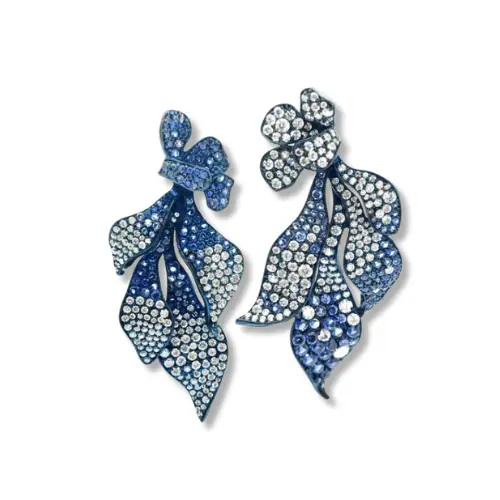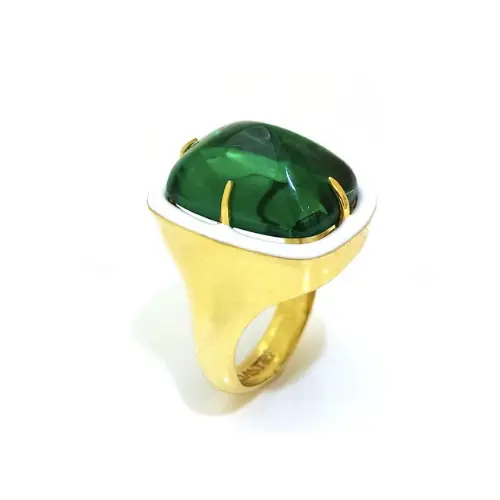
Enamel jewelry, with its exquisite colours and timeless appeal, has graced the adornments of civilizations throughout history. From ancient Egypt to the Renaissance and beyond, the art of enamelling has captivated artisans and wearers alike with its intricate designs and enduring beauty. Join us on a journey through time as we uncover the rich and vibrant history of enamel jewelry.
Ancient Origins:
The origins of enamel work can be traced back to ancient times, with evidence of its use dating as far back as the 3rd millennium BCE in regions such as Mesopotamia and Egypt. In ancient Egypt, enamel was employed to decorate ceremonial objects, amulets, and jewelry. The Egyptians developed techniques to fuse powdered glass onto metal surfaces, creating vividly coloured designs that endured for centuries.
By the 12th century BCE, the art of enamelling had spread to the Mediterranean region, where civilizations such as the Mycenaeans and Minoans crafted intricate enamel pieces, including jewelry and decorative items. These early examples of enamel work showcased a mastery of colour and design, laying the groundwork for future generations of artisans.
Medieval Mastery:
During the Middle Ages, enamel jewelry experienced a resurgence in popularity, particularly in regions such as Byzantium and the Islamic world. Byzantine artisans adorned religious icons and reliquaries with lavish enamel decorations, using techniques such as cloisonné and champlevé to create intricate patterns and motifs.
In Islamic culture, enamel work flourished, with artisans incorporating enamel into architectural elements, ceramics, and jewelry. The vibrant colours and geometric patterns of Islamic enamel jewelry reflected the cultural and artistic influences of the time, showcasing a fusion of Persian, Arab, and Byzantine styles.
Renaissance Revival:
.webp)
The Renaissance period witnessed a renewed interest in the art of enamelling, as European artisans sought to revive ancient techniques and incorporate them into their own designs. Renaissance jewelers crafted exquisite enamel pieces for the nobility and aristocracy, using techniques such as painted enamel and plique-à-jour to create miniature works of art.
One of the most renowned centres of enamel production during the Renaissance was the city of Limoges in France. Limoges enamels, characterised by their delicate brushwork and vibrant colours, were highly sought after by collectors and connoisseurs across Europe. The intricate designs and meticulous craftsmanship of Limoges enamel jewelry reflected the spirit of the Renaissance, embodying the era's emphasis on beauty, sophistication, and cultural refinement.
Victorian Elegance:
.webp)
The Victorian era ushered in a new era of enamel jewelry, with Queen Victoria herself setting the trend for enamel adornments. Victorian jewelers embraced a wide range of styles and techniques, from delicate floral motifs to bold, colourful designs inspired by exotic cultures and historical periods.
Enamel lockets, brooches, and pendants became popular accessories, often featuring intricate enamel paintings depicting romantic scenes, botanical motifs, or symbolic imagery. The sentimental value of enamel jewelry was heightened by the inclusion of hairwork, photographs, or secret compartments, adding an element of intimacy and personalization to each piece.
Art Nouveau Innovation:

The late 19th and early 20th centuries saw the emergence of the Art Nouveau movement, which brought a fresh perspective to the world of enamel jewelry. Art Nouveau designers drew inspiration from nature, incorporating flowing lines, organic forms, and richly coloured enamels into their creations.
Artists such as René Lalique and Georges Fouquet pioneered innovative techniques such as plique-à-jour en basse-taille, pushing the boundaries of enamel work and elevating it to new heights of artistic expression. Art Nouveau enamel jewelry was characterised by its sensual curves, vibrant colours, and intricate detail, reflecting the movement's emphasis on beauty, craftsmanship, and individuality.
Modern Resurgence:
In the modern era, enamel jewelry continues to captivate collectors and enthusiasts with its timeless appeal and enduring beauty. Contemporary designers draw inspiration from the rich heritage of enamel work, experimenting with innovative techniques and materials to create bold, statement-making pieces.
From hand-painted enamel cufflinks to sculptural enamel rings, today's enamel jewelry embraces a diverse range of styles and influences, reflecting the eclectic tastes and preferences of the modern wearer. Whether crafted by traditional artisans or produced using cutting-edge technology, enamel jewelry remains a testament to the enduring legacy of an ancient art form.
Enamel jewelry stands as a testament to the ingenuity, creativity, and cultural exchange that have shaped human history. From ancient civilizations to modern artisans, the art of enamelling has evolved and flourished, leaving behind a legacy of beauty and craftsmanship that continues to inspire and enchant us today. As we celebrate the rich history and techniques of enamel jewelry, we honour the artisans who have preserved this ancient art form and the enduring allure of their creations.









